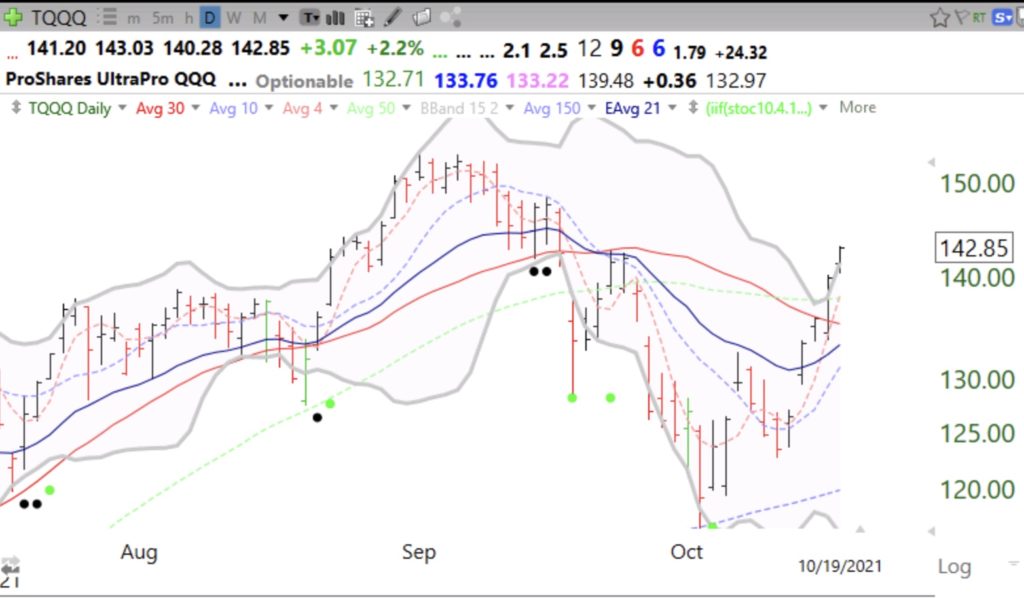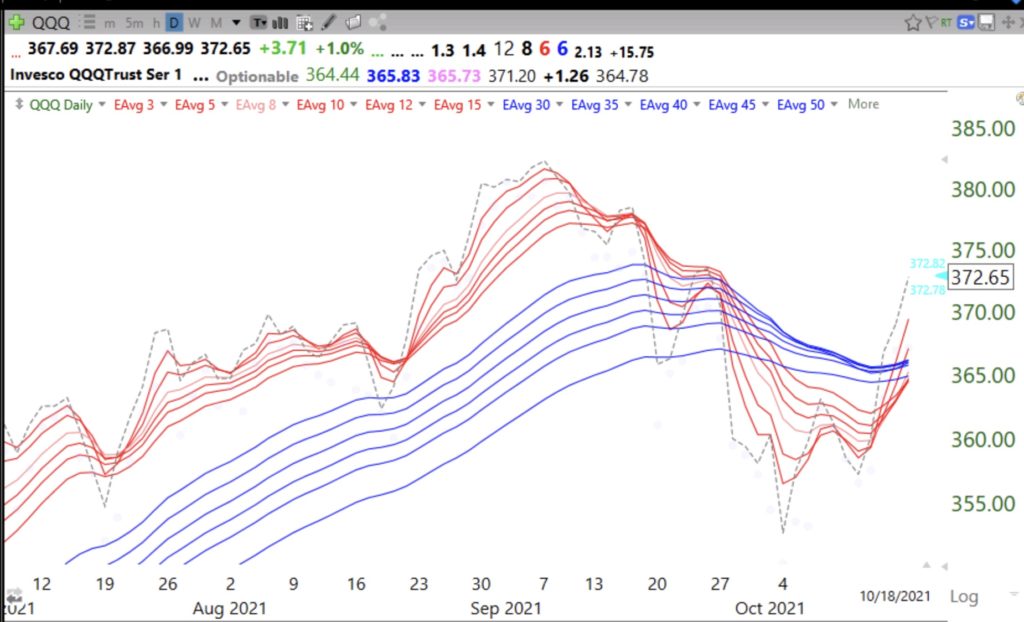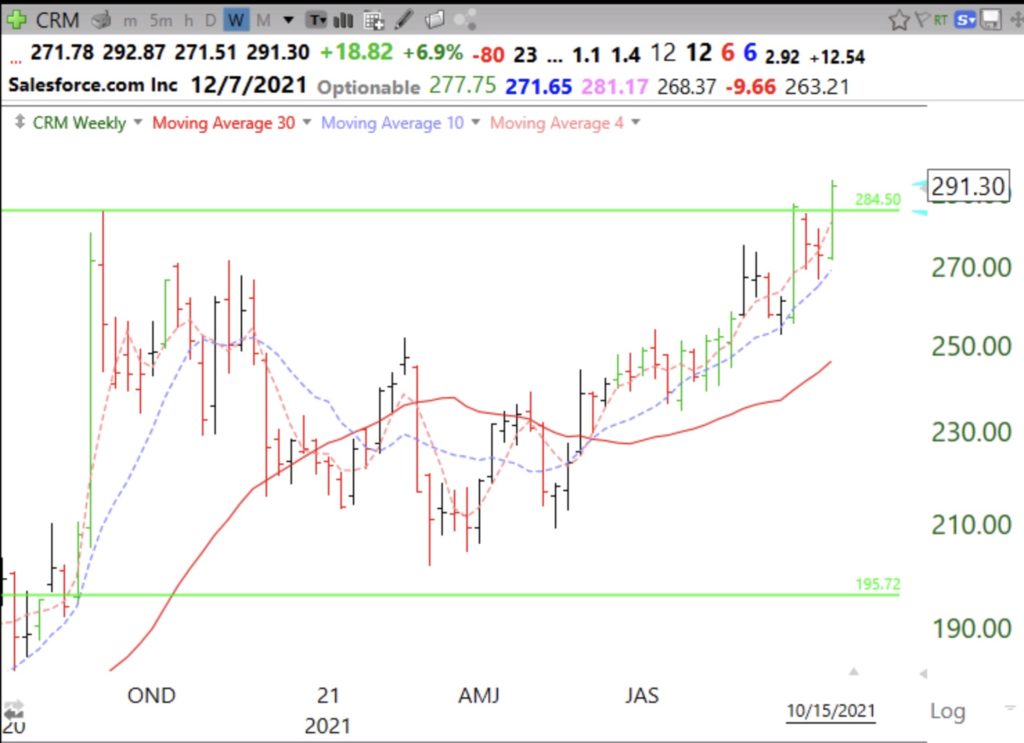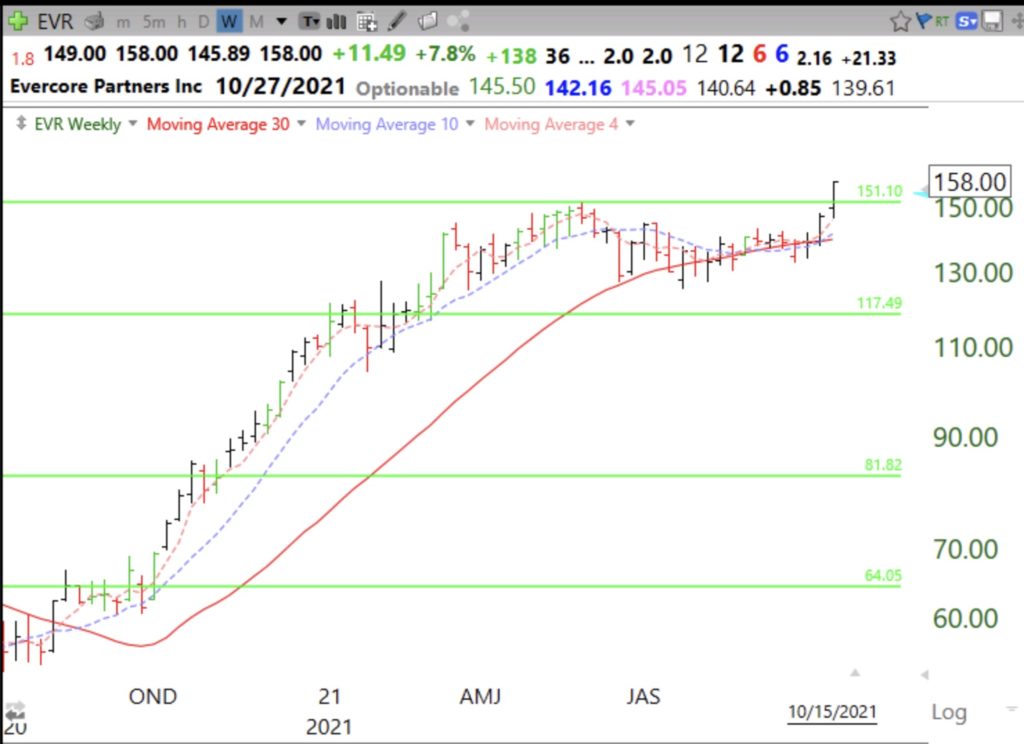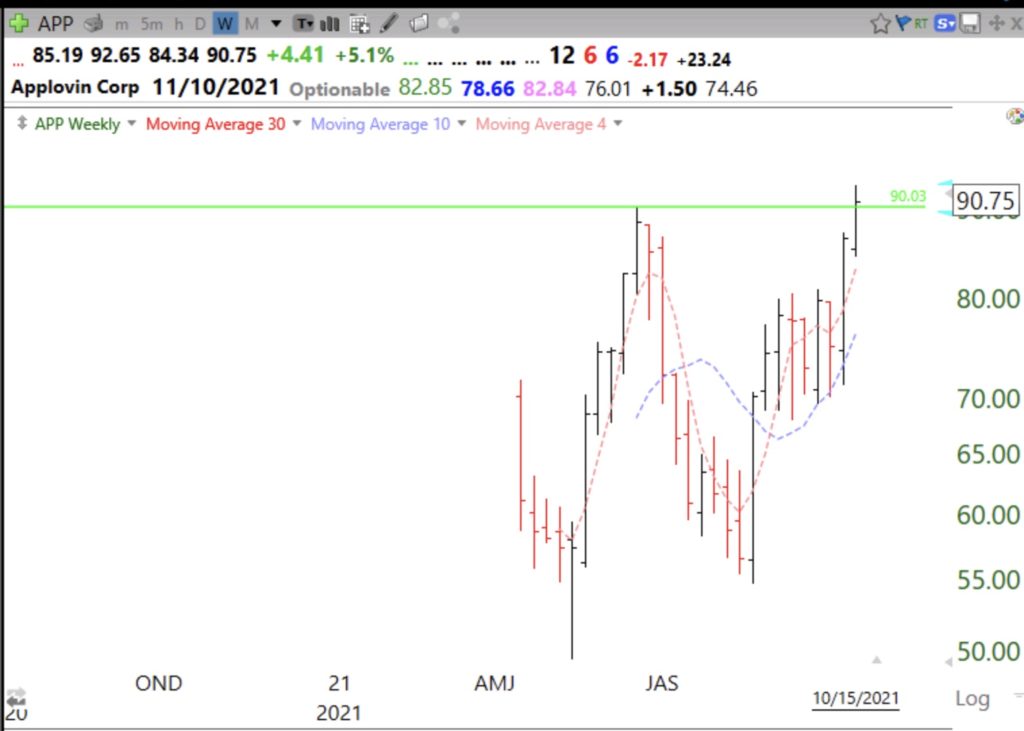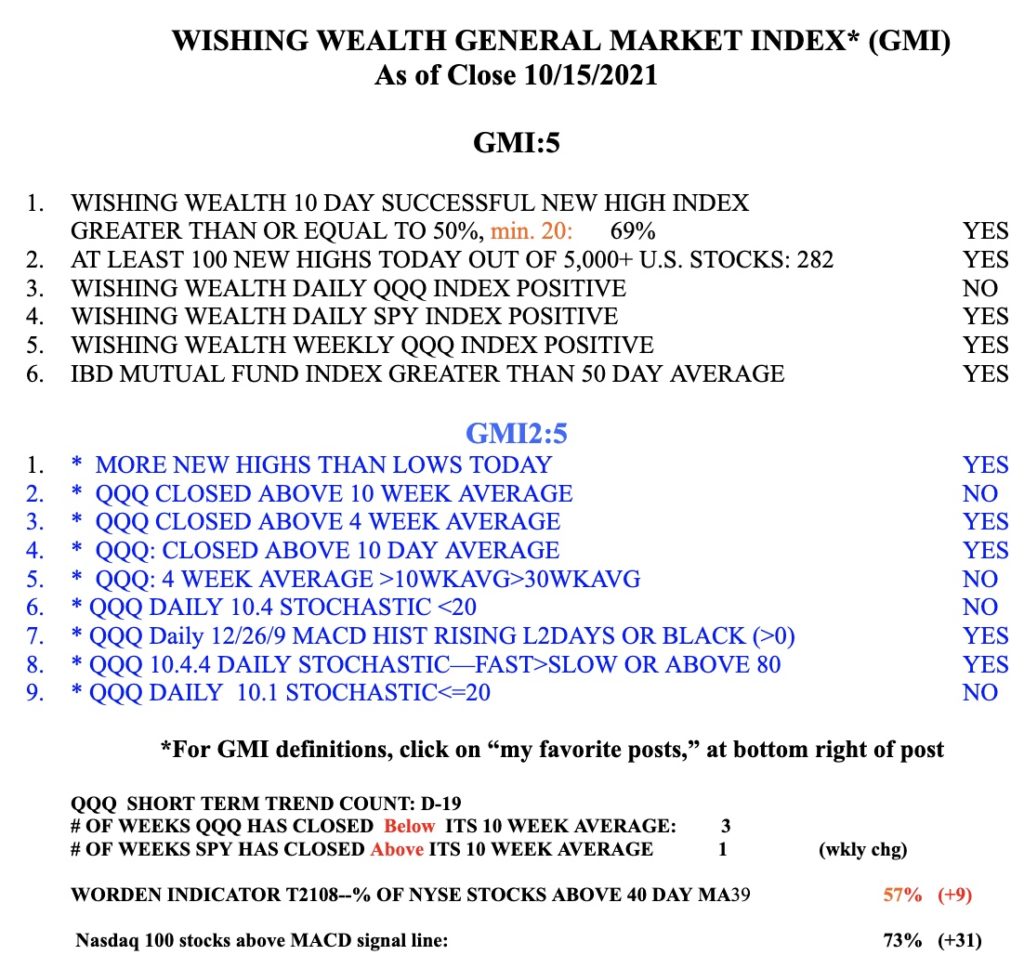 Dr. Wish
Dr. Wish
Blog post: GMI turns Green; $QQQ short term down-trend likely to end on Monday; GLBs last week to ATH: $CRM, $EVR, $APP, see weekly charts.
I especially like APP because it is a recent IPO and has strong fundamentals. According to MarketSmith, it will move to profitability this year and then is estimated to have earnings up 215% in 2022. Last quarter’s eps +167% and sales +123%. Funds only own 13% of shares. Worth watching now that it has had a GLB. Earnings due 10/28.
SPY has now closed above its 10 week average.
